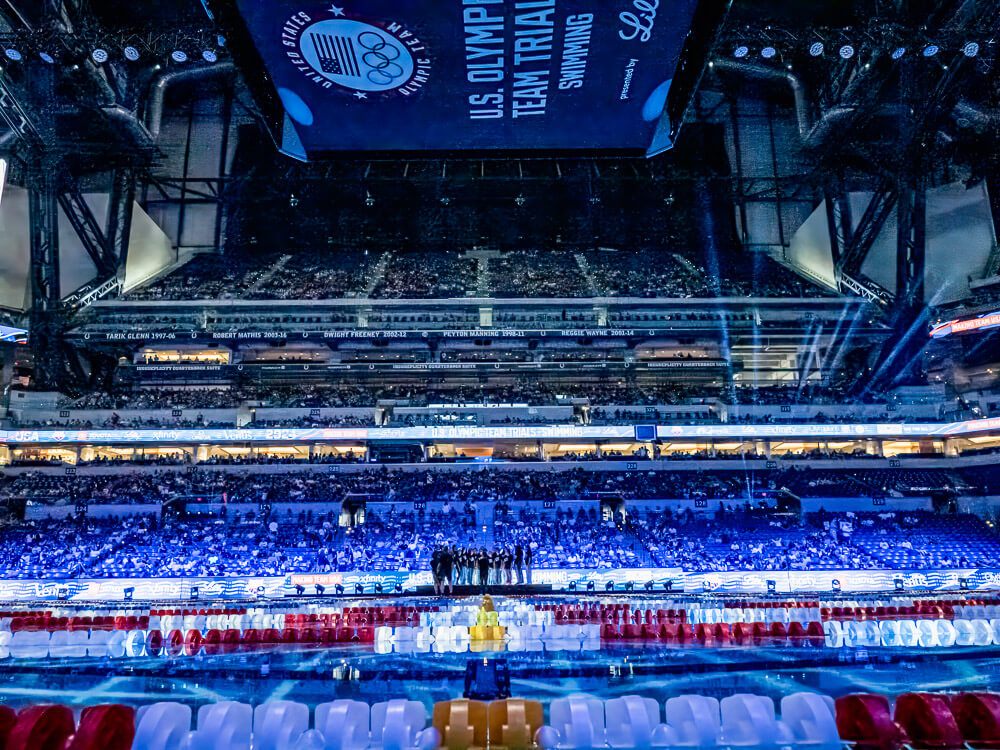What Percentage of Personal-Best Times Were Produced at Olympic Trials? A Look at Some Stats

How Many Personal-Best Times Were Produced at Olympic Trials? A Look at Some Stats
With the United States Olympic Trials recently concluded, the largest-scale swim meet in history offers many lessons and useful statistics. The nature of the meet is that the majority of swimmers have gone best times just to qualify for the meet, and very few swimmers have the luxury of easily being able to acquire cuts in multiple events.
Especially in many earlier heats of events, it’s easy to notice that very few swimmers drop from their entry times, and in fact, some events had heats where not a single swimmer went a personal best time. I assessed many of the events from Trials and analyzed the percentage of best times swum, including prelims, semifinals, and finals.
Starting with the men’s 50 freestyle, which had more entries than most events, 18/63 swimmers, or 28.6% went a personal best (PB). This event was toward the end of the meet, and for many of the swimmers, this was not their first event and wear might have started to take a toll.
The men’s 400 free had the highest PB rate of any event, at 38.3%. With 60 entries, this is a very impressive statistic, but there could be a few reasons for this. The men’s 400 was on Day One, and it was the first men’s event, meaning that this was the first swim of the meet for all of the swimmers, who were fresh for competition. Longer distance events tended to have a higher PB rate, with 32.7% in the 800 for men, and 31.3% in the 1500.
The women’s side saw similar trends to the men, with the 400 freestyle having a high percentage of best times at 32.7. Again, this was the very first day of the meet, so every swimmer was fresh. The first event of the meet, the women’s 100 fly, had a 26.3% PB rate, which is above average considering the very high 76 entries. The women’s 100 free, around the midpoint of the meet, had very few best times, with 16.1%, accounting for nine of the 56 swimmers. In addition, a seven of these nine were in the top 16. It is likely that for the majority of the swimmers in this event, it was a great challenge just to achieve this cut, and trying to replicate it at Trials was a hard task.
Every swimmer knows how tired they get at the end of a meet, and Trials seemed no different. The last women’s event, the 50 free, saw only a 16.9% PB rate. With many swimmers fatigued from previous swims, and the environment of the meet dying down at the end, this makes sense. The men’s 100 fly, one of the last men’s events, saw a similar trend, with 26.2%.
Another trend was the low rate of 18-and-under athletes going best times. Perhaps the lack of experience at big meets was a factor here, as well as the challenge for these young swimmers just to get to the meet.




One potential explanation for a lower percentage of younger swimmers not improving is that high school aged swimmers probably have much less access to 50 meter pools for practice than college and post college swimmers during the short course season.
Not in Indiana. We are lucky enough to have them all over the state. I believe just in the Indianapolis area there are 16!
Those are great percentages! When I was coaching, I would have been extremely proud of those numbers for my swimmers. PBs in the shorter events are many times harder to come by than in the longer events. There were some really outstanding drops for some swimmers in the meet – Carson Hicks from Kentucky Aquatics in the men’s 1500m is a prime example. He took almost 20 seconds off his seed time in the prelims and then took a few more tenths off in the final.
Please share complete data, every event & averages for men & women